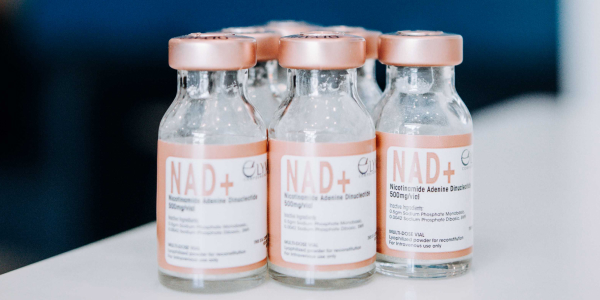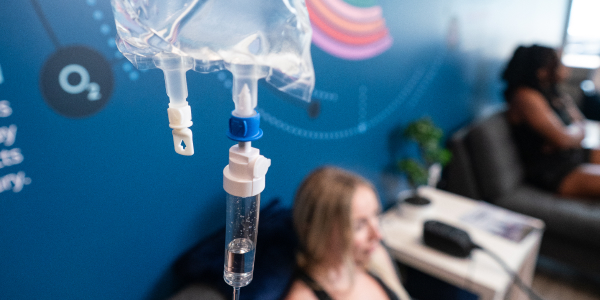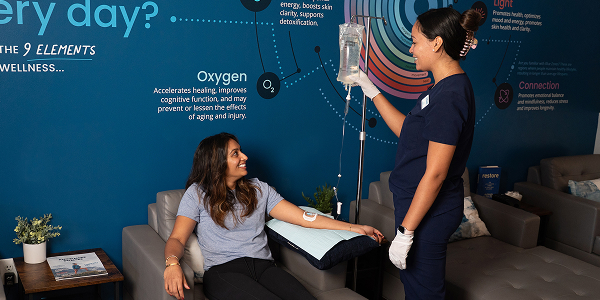What's the key to healthier aging? Cellular health, particularly the rejuvenation of mitochondria.
Two prominent wellness interventions, Red Light Therapy and Urolithin A supplements, have emerged as leading wellness tools. Both target mitochondrial function but differ fundamentally in their mechanisms and clinical outcomes.
In this thorough comparison, our experts uncover the superior choice for promoting cellular resilience and healthier aging.
Mechanisms of Action
Red Light Therapy
Red Light Therapy utilizes specific wavelengths of red and near-infrared light to penetrate tissues and stimulate mitochondrial activity. The primary mechanism involves the absorption of light by cytochrome c oxidase in the mitochondria, leading to increased production of adenosine triphosphate (ATP), the cell’s main energy source. This process enhances cellular metabolism, supports tissue repair and promotes the synthesis of collagen and other structural proteins. 2,6,7
Urolithin A
Urolithin A is a metabolite produced by gut bacteria from dietary ellagitannins, such as those found in pomegranates and walnuts. Urolithin A activates mitophagy, the process by which cells clear out damaged mitochondria, encouraging the formation of newer, healthier mitochondria. Clinical studies have shown that Urolithin A supplementation can improve muscle endurance and reduce inflammation, but its effects depend on individual gut microbiome composition and do not directly increase ATP production in the same immediate way as Red Light Therapy.
Why Our Experts Choose Red Light Therapy
Direct Mitochondrial Rejuvenation
Red Light Therapy directly stimulates the mitochondrial respiratory chain, leading to immediate increases in ATP production and cellular energy. 1,2 This direct action not only supports tissue repair but also enhances the skin’s structural integrity by promoting collagen synthesis and epidermal proliferation, key factors in reversing visible signs of aging. 1,2,5
Lasting and Visible Results
Clinical studies show that Red Light Therapy produces progressive and lasting improvements in skin quality, with effects persisting even after cessation of treatment. 1 Unlike Urolinthin A, which primarily benefits muscle health and requires the body’s ability to metabolize ellagitannins (a capacity not present in everyone), Red Light Therapy offers universal benefits regardless of individual metabolic differences. 1,2,5
Broader Cellular Benefits
Beyond mitochondrial energy, Red Light Therapy reduces oxidative stress, improves circulation and modulates gene expression linked to tissue regeneration. 1,2,6 These systemic effects contribute to healthier aging across multiple physiological systems, not just muscle or skin.
Non-Invasive and Accessible
Red Light Therapy is painless, non-invasive, and can be administered safely with well-defined protocols, making it accessible for regular use. 1,2,5 This contrasts with Urolithin A, which, while safe, is limited by individual gut microbiome variability and does not consistently enhance all aspects of mitochondrial function. 4,6
Shine Brighter with Red Light Therapy
Both Red Light Therapy and Urolithin A offer scientifically validated approaches to support mitochondrial health and healthier aging. However, Red Light Therapy’s direct stimulation of mitochondrial energy production, robust skin rejuvenation effects and systemic cellular benefits position it as the superior choice for those seeking comprehensive, non-invasive strategies to promote longevity and cellular vitality. 1,2,5,6 Consistent use of Red Light Therapy offers lasting improvements in skin quality and overall cellular health, making it a cornerstone intervention for healthier aging.
Book your Red Light Therapy appointment today!
Medical services are provided by an independently-owned physician practice. Some services may require medical clearance and a prescription. We reserve the right to refuse service to anyone. Services, therapies, nutrients and prices may vary per location. The content on our site, blog posts, educational materials, app, promotional newsletters, and any other written content are not intended to replace an evaluation with a qualified healthcare professional and are not intended as medical advice.






